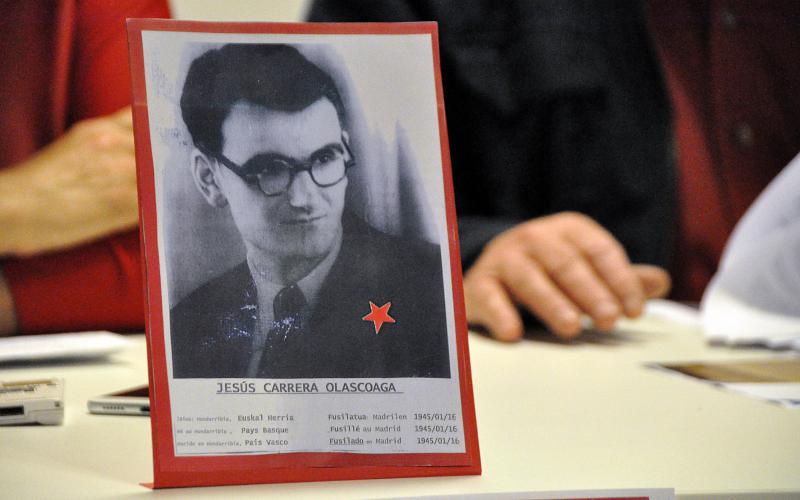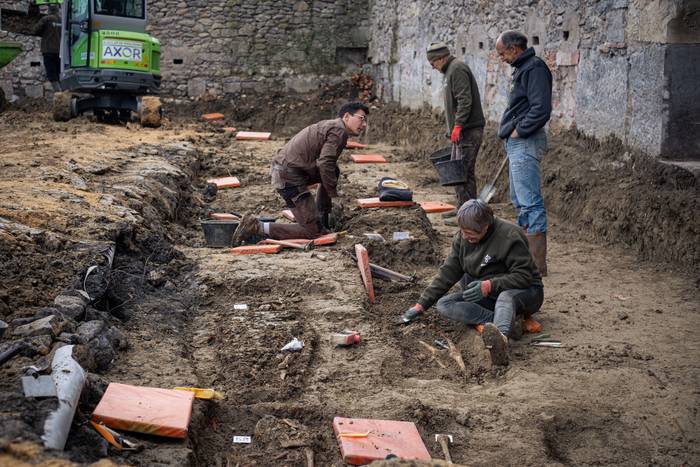The escape from the priestly prison of Zamora was frustrated by communist leader Santiago Carrillo, according to a witness
- In 1971, the escape plan of the Zamora prison of several Basque priests was suspended after the police discovery of the tunnel. Former communist abbot Nicanor Acosta, in an interview with the authors of the documentary Priest Kartzela, told them that the complainant was Santiago Carrillo: “He personally told me.”

The incognito episode of a history marked in the history of anti-Francoist priests in Euskal Herria has been revealed through a testimony gathered around the documentary Priest Cárcel. They discover how the attempted escape at the Zamora priestly prison in 1971, expressed by the retaliated priest Nicanor Acosta, who was the head of the Spanish Communist Party, Santiago Carrillo, who allegedly denounced to the police the construction of the exit tunnel, according to this testimony.
The priestly prison of Zamora was founded in 1968 between the Church and the State to imprison priests, largely Basque, convicted of political issues. In total, 52 priests were held in that building until its closure in 1976. The documentary Apaiz Kartzela, directed by Oier Arantzabal, David Pallerés and Ritxi Lizartza, gathers his history and experiences.
The documentary has travelled a long way since its presentation in April 2021 at the San Sebastian Film and Human Rights Festival. They've presented it in many places, even outside Euskal Herria. Just about a year ago in Galicia, on one of those introductory tours, Lizartza, the former bertsolari and prisoner of Zamora, Xabier Amuriza, and the journalist and former abbot Juan Mari Arrangi, got the information provided by Acosta. And then they collected the full testimony in an interview with Amuriza.
The content of this interview was presented this Thursday at a press conference held at the Kafe Antzokia in Bilbao.
Santiago Carrillo Declaration
Nicanor Acosta Alonso, son of a humble Galician family, was a priest of the Church of San Jorge de A Coruña in 1969, after being imprisoned in Zamora for fighting Franco. Leaving there he continued to defend progressive ideas and, for example, was one of the most well-known faces of the M-15 movement in the streets of A Coruña.
“I remember leaving the library [Carrillo] standing next to me and he said, ‘Nicanor, I was the one who gave the government the communication about the Zamora prison tunnel.’ That told me personally.”
In the interview, she confesses to Amuriza that she feels guilty. In 1971 he left Zamora prison shortly before the end of the Acosta tunnel and soon went to the Spanish Communist Party (PCE). The head of the area of A Coruña, Santiago Álvarez, reported the flight a few weeks earlier: “I asked the party to cooperate in the flight,” says the former priest. Acostacosta drove the party to take refuge in the convicts, but it almost certainly caused the police to find a 20-meter tunnel and frustrate the escape.
Acosta recalls that at that time the PCE was illegal and that the leader was Santiago Carrillo. He knew everything he had said at the clandestine meetings of the Madrid executive committee, despite being in exile in Paris. And at that point the interviewee makes a surprising expression: “It was he, because he told me.”
To confirm this, Acosta tells of the step he went through when, after many years, he met Carrillo in the presentation of a book: “I remember that when he left the library he stood beside me and said: ‘Nicanor, I was the one who gave the government the communication about the tunnel of Zamora’s prison.’ That told me personally.”

His words were “nailed in the heart” to the former priest, so until now he had not communicated it. But Acosta believes that Carrillo denounced the flight because he had “the desire” to legalize the party: “For him priests should not be protagonists of the struggle for democracy, but workers”.
Concerning the authenticity of the testimony
The Basque priests who prepared the getaway have often explained that the police did not find the tunnel by surprise, but by a complaint: “They were directly,” says former priest Josu Naberan who prepared the escape from the beginning in this interview.
I explained to ARGIA that they have tried to prove the authenticity of Acosta’s testimony: “We have made many efforts in the prison archives, in the Government of Spain, even within the PCE. I have been with Martín Villa, because he had a political relationship with Carrillo because of the legalization of the party,” says the journalist. But officially they did not know anything else about this episode of the leak. So they decide to make the interview public to Acosta.
.jpg)
“There may be people who think that all this is their invention…”, Amuriza tells the interviewee at the end: “I think Santa Teresa said: humility is true. I don’t have to hide the truth and I go with her to the end of the earth.”
Pamplona, 1939. At the beginning of the year, the bullring in the city was used as a concentration camp by the Francoists. It was officially capable of 3,000 prisoners of war, at a time when there was no front in Navarre, so those locked up there should be regarded as prisoners... [+]






















